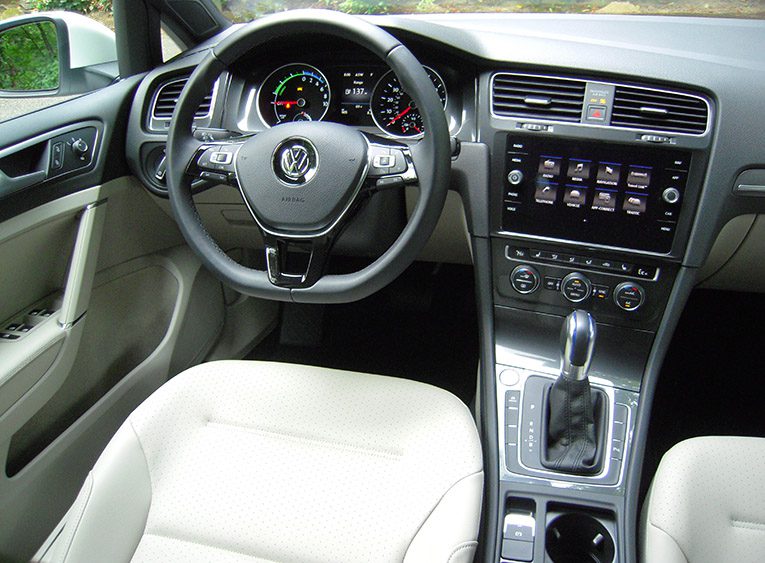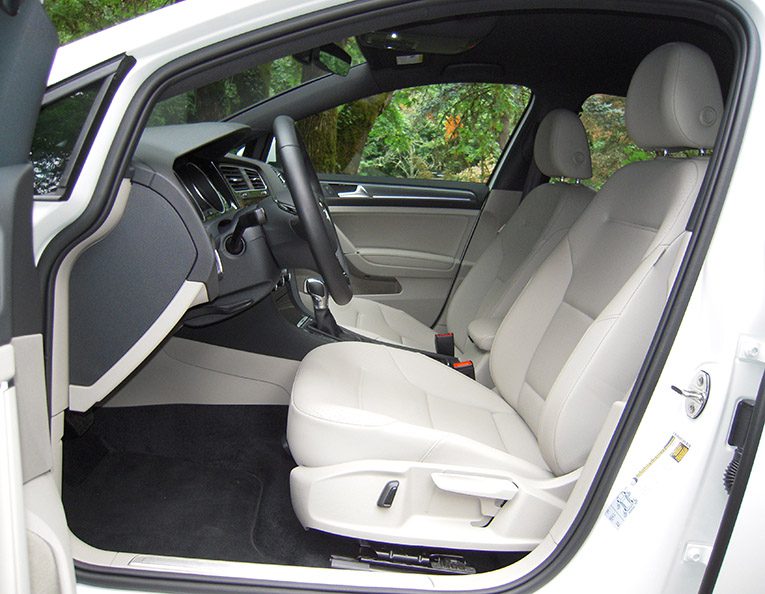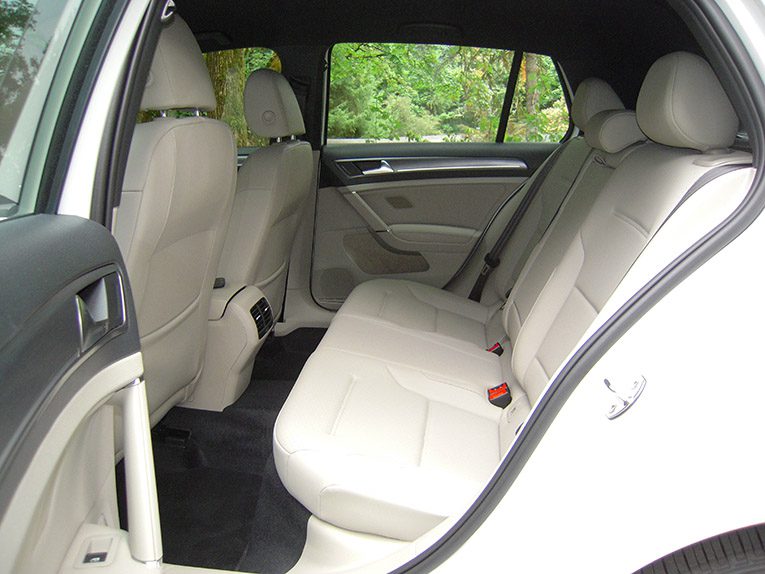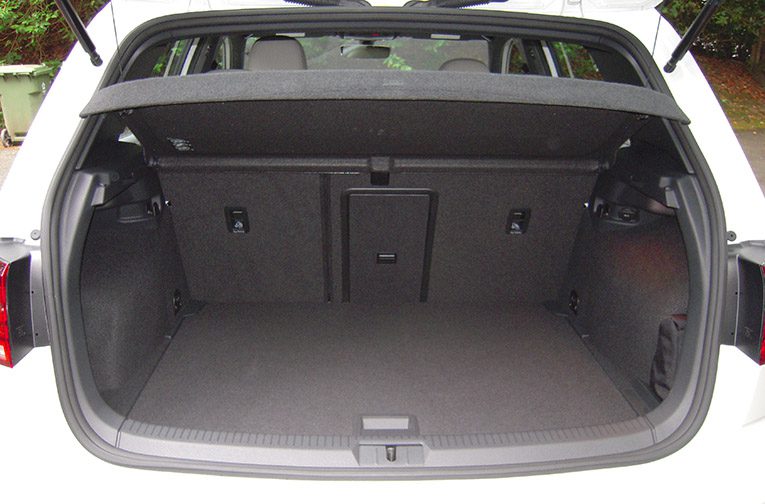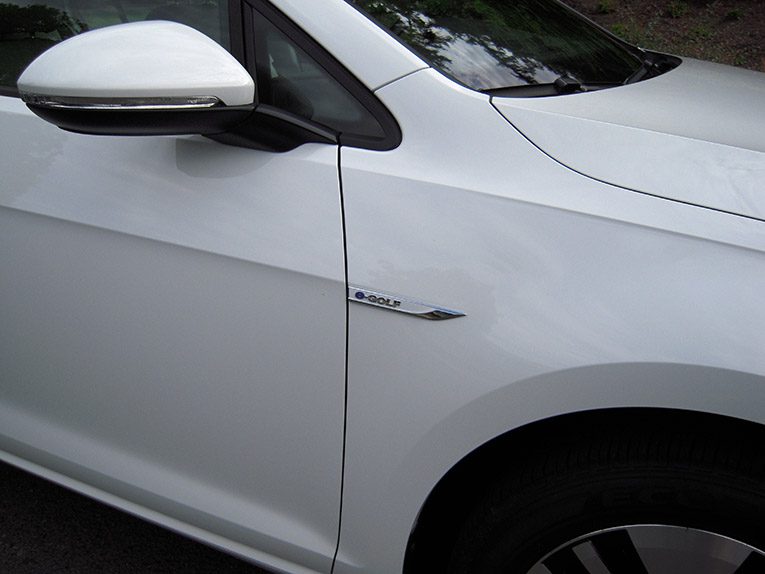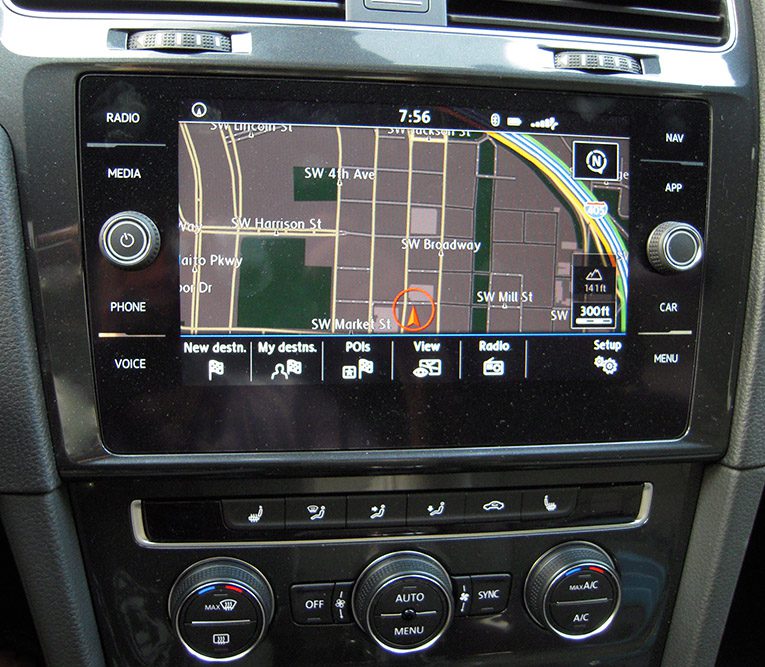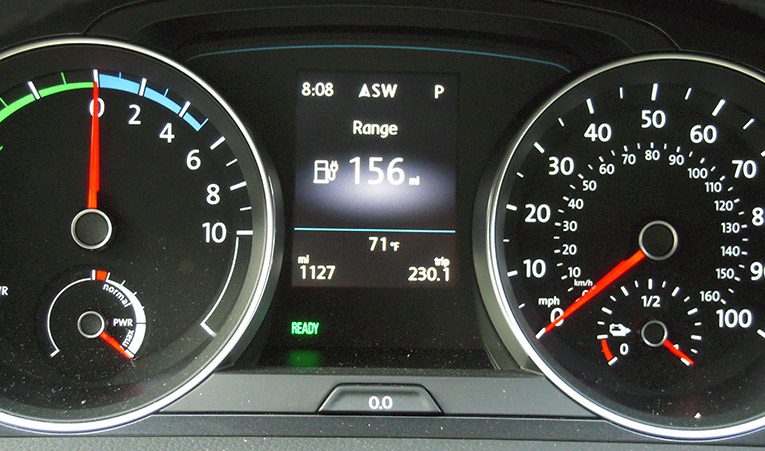The 2017 Volkswagen e-Golf has only been around for a couple of years but already gets refreshed for the 2017 model year. The most noticeable improvements are a 50-percent jump in range, increasing from 83 to 125 miles, and more power.
The e-Golf comes in three trims: SE, Limited Edition and SEL Premium. Starting prices range from about $30,000 to $37,000, not including the $7,500 federal tax credit. Volkswagen has not released detailed pricing info. For now, the e-Golf is only available at participating dealers in California, Connecticut, Maine, Maryland, Massachusetts, New Jersey, New York, Oregon, Rhode Island, Vermont, and Washington D.C.
On the outside, it looks like a regular Golf but with unique badges and blue accents, C-shaped LED daytime running lights in the front bumper, and LED taillights in the rear.
The 2017 e-Golf has a 100-kWh electric motor powered by a 35.8-kWh lithium-ion battery, up from 24.2 kWh in the outgoing model. Total horsepower is 134 up from 115. Torque also increases to 214 pound-feet up from 199.
The e-Golf drives like, well, a Golf. So it’s a lot of fun. It’s quick off the line and stays planted when cornering. You’ll notice a bit of the usual regenerative braking feel but not as much as in some other EVs. VW says the 2017 e-Golf can go from zero to 60 mph in 9.6 seconds—faster than its predecessor—and its top speed increases to 93 mph.
There are three driving mods: Normal, Eco and Eco+. In Eco mode, maximum power is limited to 94 horsepower and 162 lb-ft, and adjustments are made to the air conditioning system and the response curve of the accelerator pedal. Top speed in “Eco” mode is electronically limited to 72 mph and 0 to 60 mph performance is approximately 13 seconds.
In Eco+ mode, power output is limited to 74 hp and 129 lb-ft; top speed is 56 mph and the accelerator pedal response curve is flattened even more. The vehicle’s air conditioning is also switched off to help maximize efficiency. Regardless of the drive mode you select, you can press hard on the accelerator and get back to the maximum power and performance of the Normal mode.
In addition to the driving modes, the regenerative braking system has three settings to control the amount of energy that can be recuperated from braking to help manage the e-Golf range. If the battery is fully charged and the vehicle is in standard “D” mode, no regenerative braking will occur. If the driver lifts off the accelerator pedal or taps the shift lever to the left, the first level of regenerative braking, “D1,” is activated, wherein a small amount of energy is recuperated (and the car is slowed slightly).The Levels “D2” and the maximum “D3”/“B” offer increasing levels of energy regeneration.
EPA ratings for the e-Golf are 126 MPGe (miles per gallon equivalent) and 111 MPGE highway with a combined rating of 119 MPGe. This beats the outgoing model which was rated at 126, 105 and 116, respectively.
I easily got the promised range of 125 miles per charge. With careful driving and minimal use of the AC, I could even extend the range to more than 150 miles.
All trims can be charged at Level 1 (110/120V) but it can take as long as 26 hours to fully charge the battery.The 7.2-kW onboard charger is standard on the SE and SEL Premium trims, which enables the battery to be charged in less than six hours at a 240V charging station. Level 3 or DC fast charging is an option on the SE trim and standard on the Limited Edition and SEL Premium trims. That can charge the battery to 80 percent in about an hour.
I have a regular Level 1 plug in my garage and it would take as long as 14 hours to fully charge after a day’s worth of driving without fully depleting the battery.
The interior looks modern with a clean design. Seats are comfortable with enough room for adults in both rows. The cabin is as quiet as a library. Of course, it’s an EV so you expect it to be quieter than a traditional car. But VW has fitted the interior with highly sound-absorbent, lightweight materials to minimize wind and tire noise, and the sounds made by the electrical system. And so pedestrians and aren’t caught off guard by an approaching e-Golf, there’s a low-speed sound system to help alert those nearby.
VW’s MIB II infotainment system is standard on all Golfs. The old 6.5-inch center screen makes way for a new eight-inch screen that’s faster and brighter. Car-Net App-Connect smartphone integration for compatible devices is standard on all e-Golf models with Apple CarPlay, Android Auto and MirrorLink.
Several driver assistance technologies are available. My SEL Premium tester has forward-collision warning, automatic emergency braking, and parking assist.
Cargo room is the same as in the regular Golf at 93.5 cubic feet. There are 22.8 cubes behind the back row and 52.7 cubes with the rear seats folded.
The good:
Decent range at 125 miles
Excellent driving dynamics you’d expect from a Golf
Clean and modern interior
Hatchback versatility
The not-so-good:
Range is much less than Chevy Bolt
Pricing info:
Volkswagen did not provide detailed pricing info for my tester. The 2017 e-Golf is expected to be priced from about $30,000 to $37,000.
Bottom line:
Want an electric vehicle that drives like a Golf? Here you go!




